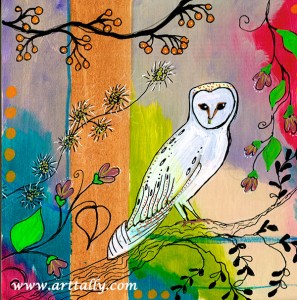Amazing facts about the owl
 Whenever I choose something to draw, one of the things I love most is how studying its form in order to capture a likeness makes your curiosity about the subject grow. It is one of the things I love most about art. It can take you away from your everyday worries for a little to ponder something completely different. To contemplate and appreciate the world around us.
Whenever I choose something to draw, one of the things I love most is how studying its form in order to capture a likeness makes your curiosity about the subject grow. It is one of the things I love most about art. It can take you away from your everyday worries for a little to ponder something completely different. To contemplate and appreciate the world around us.
I chose owls for this first set in the June series because I think there is something a little bit special about them. Quiet, graceful, knowing. They are really not like any other bird.
We probably think of them as birds of prey, grouping them in our minds with hawks and eagles. But there is a school of thought in the taxonomy of these birds that their closest relatives are in fact hummingbirds and kingfishers. Hawks and eagles are diurnal hunters and therefore considered a little more primitive, akin to the cranes, herons, and other prehistoric-looking birds. Owls are nocturnal hunters, cleverly avoiding competition by hunting in opposite hours to the birds of prey.
One of the owl's most distinguishing features is its eyes. Those large round eyes are in fact completely immobile. They are not 'balls' as such but are shaped more like tubes. Unlike other birds, owl eyes are on the front of the head rather than the side, giving them the more human quality of binocular vision.
Of course, having totally immobile eyes, no matter how captivating they may be, is something of a limitation. The owl compensates by being able to rotate its head 270 degrees - not full circle as we may have liked to believe.
Being able to rotate your head in an almost complete circle does mean that you will be asking rather a lot of your neck. The owl neck has fourteen vertebrae, twice the number found in other birds. These vertebrae facilitate the impressive range of motion. Such a range of motion however, creates its own set of problems.
Twisting at the neck so dramatically impacts the blood circulation to the brain. The owl has some rather amazing systems to deal with this issue. For example it has developed alternative blood vessel routing and air-cushioned vessel casings to prevent rupture and stroke during violent head motion. And when neck movement cuts off circulation, the owl has special blood-pooling systems that collect blood to power their brains and eyes.
What a remarkable creature the owl is.
If you would like to know more about the amazing owl here are some good places to start:
- 10 Awesome facts about owls
- Video: True facts about the owl
- Comprehensive information on owls from Bioexpedition.com